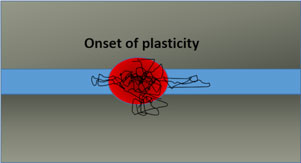Crossref Citations
This article has been cited by the following publications. This list is generated based on data provided by
Crossref.
Souto, Jorge
Pura, José Luis
and
Jiménez, Juan
2019.
Thermomechanical issues of high power laser diode catastrophic optical damage.
Journal of Physics D: Applied Physics,
Vol. 52,
Issue. 34,
p.
343002.
Pura, Jose Luis
Souto, Jorge
and
Jiménez, Juan
2020.
Effect of thermal lensing and the micrometric degraded regions on the catastrophic optical damage process of high-power laser diodes.
Optics Letters,
Vol. 45,
Issue. 7,
p.
1667.
Dadgostar, S
Souto, J
and
Jiménez, J
2021.
CL as a tool for device characterisation: the case of laser diode degradation.
Nano Express,
Vol. 2,
Issue. 1,
p.
014001.
Donetski, Dmitri
Kucharczyk, Kevin
Liu, Jinghe
Lutchman, Ricardo
Hulbert, Steven
Mazzoli, Claudio
Nelson, Christie
and
Podobedov, Boris
2022.
High power density soft x-ray GaAs photodiodes with tailored spectral response.
Semiconductor Science and Technology,
Vol. 37,
Issue. 8,
p.
085024.
Skvortsov, Arkady A.
Varlamov, Dmitriy O.
Nikolaev, Vladimir K.
Volodina, Olga V.
and
Skvortsova, Anna A.
2022.
Shock-wave Processes in the Electric Explosion of Thin-Film Systems on Silicon.
Silicon,
Ni, Yijia
Feng, Shiwei
Feng, Zhihong
Lu, Xiaozhuang
and
Bai, Kun
2022.
Research on transient thermal behavior of semiconductor lasers under pulse current excitation by thermoreflection technique.
Optics Communications,
Vol. 521,
Issue. ,
p.
128540.
Liu, Yang
Gao, Zehai
Chu, Molin
Yang, Guoquan
Li, Siyuan
and
Ma, Cunbao
2022.
Prediction Method of Remaining Service Life of Aviation Transformer Rectifier Based on Improved LSTM Algorithm.
p.
343.
Moneta, J.
Staszczak, G.
Grzanka, E.
Tauzowski, P.
Dłużewski, P.
and
Smalc-Koziorowska, J.
2023.
Formation of a-type dislocations near the InGaN/GaN interface during post-growth processing of epitaxial structures.
Journal of Applied Physics,
Vol. 133,
Issue. 4,
Souto, Jorge
Pura, José Luis
Anaya, Julian
and
Jimenez, Juan
2025.
About the influence of temperature operation and packaging stress on the threshold for catastrophic optical damage in laser diodes.
Microelectronics Reliability,
Vol. 168,
Issue. ,
p.
115695.




